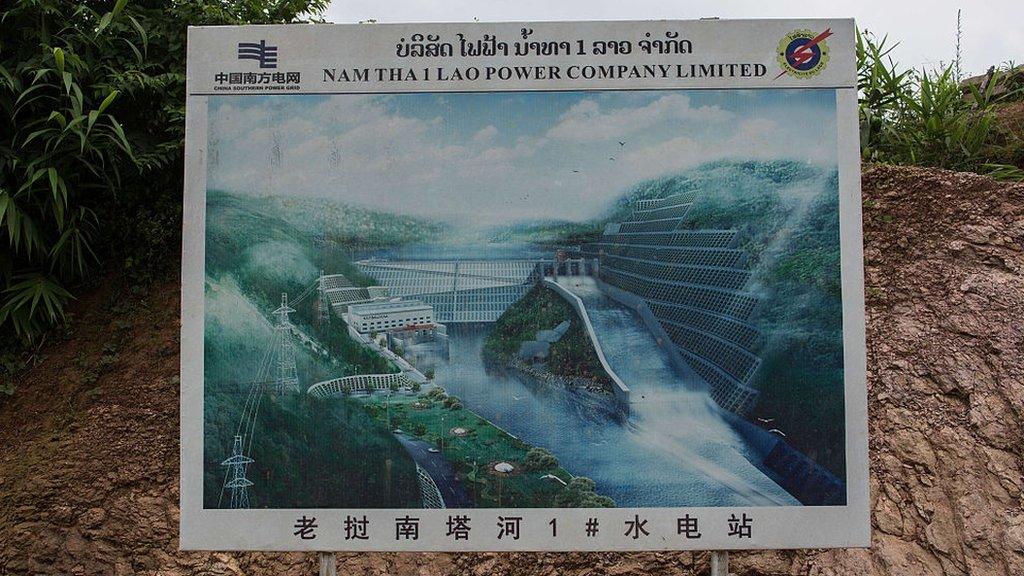Hydropower dams: What's behind the global boom?
- Published
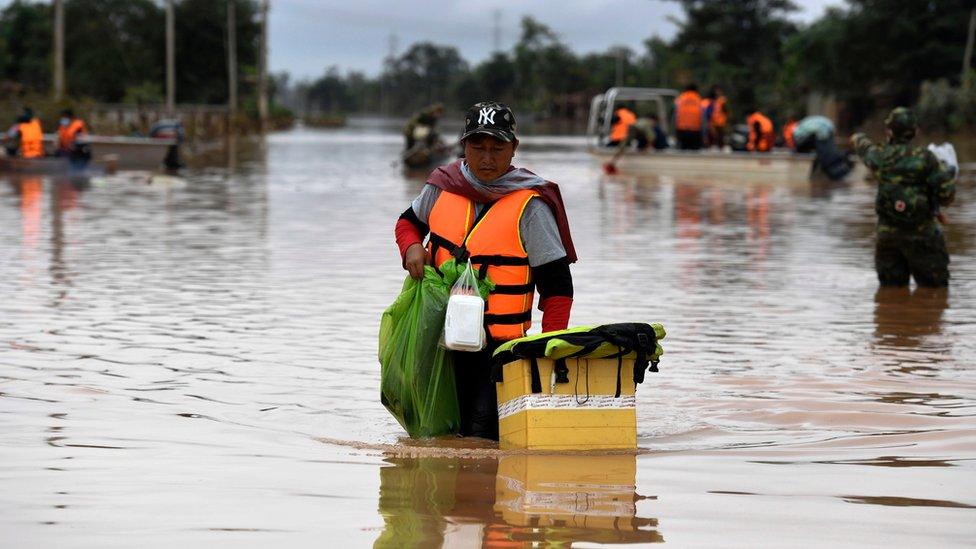
The collapsed dam in Laos caused massive flooding in the Mekong Delta
The collapse of a newly built dam in Laos has shone a spotlight on a worldwide construction boom.
Many thousands of hydropower dams are either planned or under construction - across South East Asia, South America, the Balkans and Africa.
Laos has joined the construction race, with an ambition to become the "battery of South East Asia".
"Energy-hungry countries are demanding cheap and clean energy," says Julian Kirchherr, a researcher at the University of Utrecht.
The anti-dam movement is now contending with an industry that was temporarily written off by some, but is now making a comeback.
Critics point to the inherent dangers of building too many dams, too fast and without sufficient consideration for the consequences.
With hydropower dams at the heart of debates about energy and the environment, Reality Check looks at what's behind the dam-building rush.
Energy for growth
The electricity produced by hydropower dams is presented as the means to get people out of poverty, says Susanne Schmeier, a senior lecturer at the IHE Delft Institute for Water Education. "People need the electricity. We do need sustainable hydropower. The question is: Who decides how it's done?"
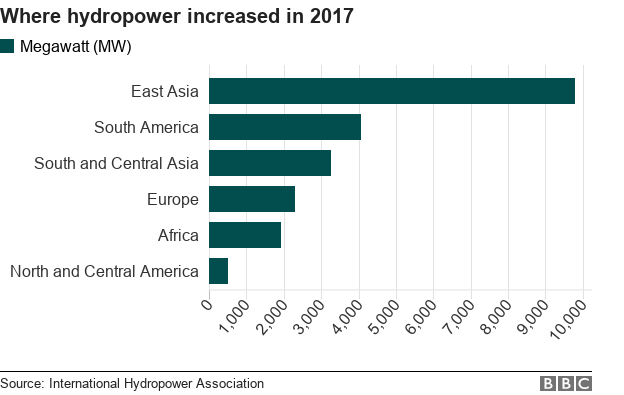
Hydropower is the world's largest source of renewable electricity.
The dams store river water which, when released, powers turbines and generators to create electricity.
More than 3,500 hydropower dams are being planned or built around the world, according to a database maintained by Christiane Zarfl (and others) at the University of Tubingen. This could double by 2030.
Most of these dams are at the planning stage, and the data doesn't include dams primarily designed for water supply, flood prevention, navigation and recreation - so the total number of dams being built could be much higher.
Brazil leads the way in terms of the number of new dams. China is still expected to produce the most electricity using hydropower.
The river basins with the most dams are La Plata (covering parts of Argentina, south-east Bolivia, southern Brazil, Paraguay and a large part of Uruguay), the Ganges-Bramaputra (mainly India but also China, Nepal, Bangladesh and Bhutan) and the Amazon (Bolivia, Brazil, Colombia, Ecuador, Guyana, Peru and Venezuela).
According to Ms Zarfl's latest unpublished data, since 2015 almost 100 new dams have been proposed in Africa, with noticeable increases in Angola, Burundi, DRC and Mozambique. And more than 130 have been added in South America, especially Peru, Brazil and Ecuador.
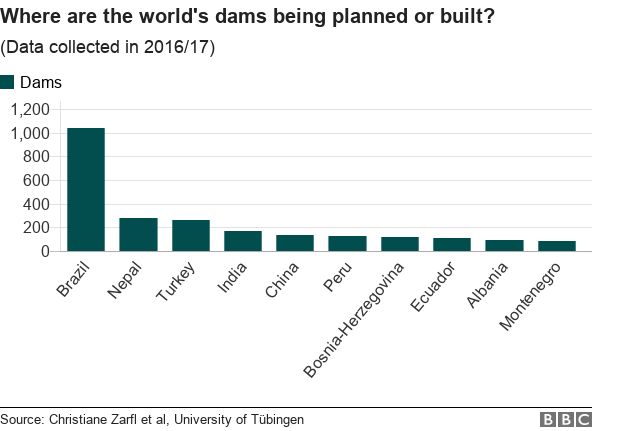
New projects such as the vast Belo Monte dam in Brazil, which has pitted indigenous communities in the Amazon against big corporations, and Ethiopia's Grand Renaissance Dam on the Nile are hugely contentious.
Along the Mekong River, five dams have been completed, two are under construction and 10 are being planned, according to International Rivers.
By 2020, Laos wants 100 operational hydropower plants. Three of the largest dams ever built are near completion in the Amazon.
The World Bank's declining involvement
Until the 1990s, the World Bank was heavily involved in supporting dam construction projects.
However, public pressure and mounting controversies surrounding some high profile dam-building projects led to increasing concerns.
In 1993, it withdrew funding from a multi-million dollar project along the Narmada river in India.
The Bank, "once the biggest force behind big dams", had "grown skittish", said the Economist, external.
A report by the World Commission on Dams in 2000, commissioned by the World Bank, highlighted the social and environmental damage that was being caused by large dams.
Between 40 million and 80 million people worldwide have been displaced by dams, said the report. Some believe that figure could be much higher if you take into account the effects beyond immediate displacement - such as access to land for agriculture and fishing.

The Belo Monte dam, under construction in Brazil's Amazon rainforest, led to street protests in Sao Palo in 2011
"This watershed moment marked a shift in the way hydropower projects were planned and developed, with greater focus on affected communities," says Will Henley, a spokesman for the International Hydropower Association (IHA). The IHA now publishes sustainability guidelines for hydropower projects.
China leads the way
With the World Bank turning away from the sector, China has filled the gap and now dominates the industry.
Since the turn of the century, China has accounted for over half of worldwide hydropower growth, according to the IHA. It has capacity to produce twice as much as the US.
And China not only became the largest producer, it also started taking its business abroad.
Chinese construction companies and financiers were encouraged to go global as part of the government's attempt to do more business overseas.
This is why many experts believe that Chinese companies now control at least half of the hydropower dam-building market worldwide.
"Chinese players were seen as a welcome replacement to World Bank funding because they did not ask as many questions [about resettling communities or biodiversity] as the World Bank", Mr Kirchherr says.
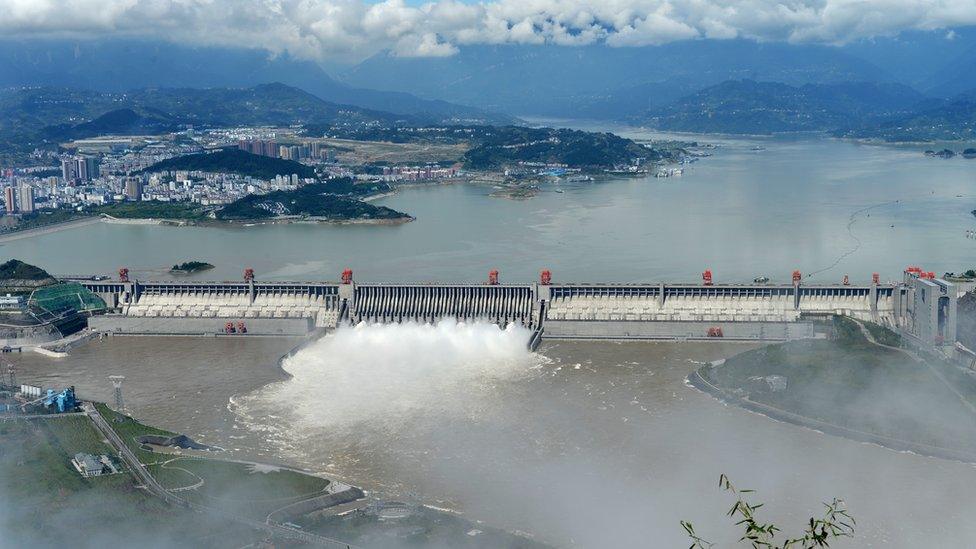
The Three Gorges Dam has 32 hydropower generators

China's Three Gorges Dam
World's biggest dam
Cost up to £25bn
1.4 million people relocated
The reservoir submerged 13 cities, 140 towns and 1,350 villages
The dam produces the same amount of electricity as 11 nuclear power stations

Concerns remain
Whether there are too many dams depends on how they are built and the degree of consultation with local communities.
"A very sustainable construction takes time. It needs to have assessments in place that take into account other dams along the river," says Christiane Zarfl at the University of Tubingen and co-author of the dams database.
"Building a dam very quickly can lead to mistakes."
As construction projects multiply around the world, campaigners continue to highlight the negative impact of dams on local populations and the surrounding ecosystem.
A 2012 survey found that more than 70% of people who had been resettled said they had become impoverished. Dams reduced fish populations in the Mekong River basin relied on by people for food, according to another study.
However, the significant benefits of hydropower are clear. These dams produce much-needed electricity and there are agricultural benefits as well.
And the renewed interest from the World Bank in supporting dam construction -- with involvement in two recent projects in Laos -- is a clear indication of growing international support for well-managed hydropower, "especially in the context of the climate change debate", says Ms Schmeier.



- Published24 July 2018
